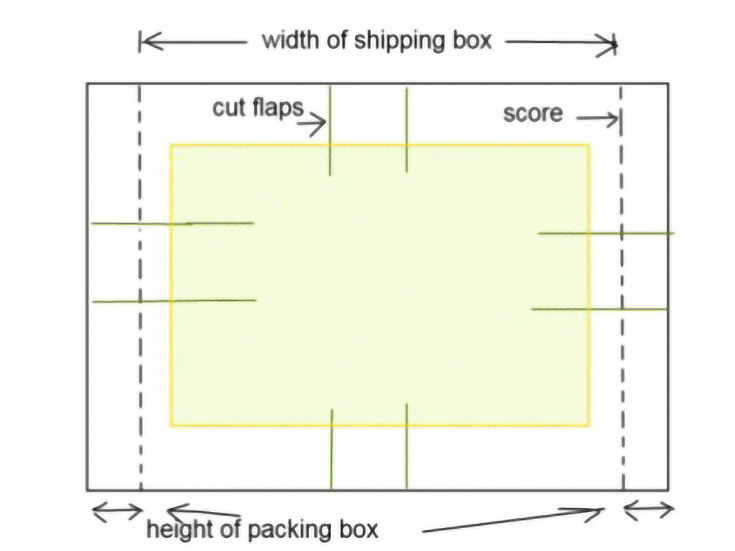When packing up your art for shipping to the gallery or to a customer, the most important thing is to have it arrive intact.
There are wonderful packing materials available for protecting fragile items, like bubble wrap, puffy paper and packing peanuts, but you’ll also need a container big enough for your artwork. I’d recommend finding a way of suspending your artwork inside the containing box, too, so that it doesn’t touch the edges.
Here are a few systems that I’ve used over the years:
Airfloat boxes
Airfloat are FedEx approved boxes that are especially designed for shipping fragile, oversize parcels. These are pricey not only because they have super wonderful foam innards, but also because they have puncture proof shields to protect the work in case something comes at those vulnerable, big flat sides.
Don’t let the price put you off, though. These boxes are so sturdy that I was able to recycle one back and forth over many trips for some twenty years!!
I had one incident of damage with this bulletproof box, and it was because a customer tried to ship something in it that was too large, and the corners were jammed into the corners of the box. Be sure to order a box large enough so your art will not directly touch the box on any side or corner.
(Suggestion: Ask your customer to ship it back to you, and include a return label. Charge it with the shipping charges. You will not go wrong with this.)
Frame boxes
My frame supplier has a very simple and effective way of getting a frame or a stack of frames to me. They use a sturdy, oversize box—a good two inches larger than the dimensions of the wrapped contents on all sides—along with a wonderfully designed insert made of sturdy corrugated cardboard, cut, scored and folded to slide into the box and keep the contents suspended in space.
If you can’t find a frame box with an insert which fits your artwork, you can always make your own. I’ll describe how at the end of this article.
Mirror boxes
Truck rental centers carry “mirror boxes” that work well for large art. Sometimes I also pick up used shipping boxes that are appropriately sized for my needs. Sturdy flat sheets of corrugated cardboard can often be salvaged from stores that receive large items like mattresses or furniture.
How to secure your artwork inside a box
Taking my cue from the frame boxes mentioned above, I have been successful in creating inserts to anchor artwork inside a box so it doesn’t touch the edges.
The following diagram and pictures show how to make an insert to protect your art, and fit it inside a box for shipment. Using a utility knife, a ruler, and some strapping tape or twine, you will pack up a painting that will make the trip to its destination safely without excessive weight or a lot of fuss.
In this diagram, the art piece is shown as a colored rectangle. Cut areas are solid lines and folded parts are dotted lines. As you can see, I cut two times from each side towards the middle, creating big flaps that can be folded around the artwork.
If more than one work of art is being shipped, wrap each item in bubble wrap individually, and then tape them together as a unit. Place that stack in the center of your prepared insert and fold the flaps over on all sides, taping or binding them securely against the bubble wrapped stack of art.
Slide your strapped insert into your box, bending the side flaps upward to perfectly fit into your box. Add peanuts to fill empty places if your piece is glazed or very delicate. Put your packing slip in, seal the end securely, label and ship.
Of course, even with all of these precautions, you will always want to pay for shipping insurance. Do your final sealing in front of the shipping agent so they can confidently insure your package.
This post may contain affiliate links.



